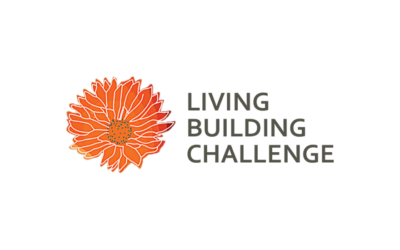When strategic planning is done well, your entire community is engaged, positioning your organization for successful fundraising. Last week, David Walsh participated as a panelist along with Lisa New, President and CEO of Zoo Knoxville, in a Skystone Partners’ sponsored webinar that addressed the importance of the strategic planning process and its vital role in successful fundraising.
Moderated by Elizabeth Kohler Knuppel, President & CEO of Skystone Partners, a fundraising consulting firm, the webinar explored the what, when, how, and why of strategic planning, and provided real-world experiences demonstrating how proper planning yields big financial returns. We highlight key takeaways below.
Click here to view the full webinar recording. And mark your calendars for Part Two: How Do I Know When It’s Time to Start Raising the Money? webinar on Tuesday, May 9th at 12PM.
Key takeaways:
-
What is a Strategic Plan and what does it include?
- The strategic planning process builds a common guiding direction, identifying a “North Star” for staff, leadership, and the Board to rally around. It identifies what will you do AND what will you NOT do.
- Comprised of these components:
- Mission: define who you are as an organization
- Vision: define where you want to go as an organization
- Goals and Objectives / Strategic Commitments: define how you will get there
- Helps inform other plans. But is not your Master Plan, which focuses on facilities and campus design; nor a Business Plan, which focuses on finances and expenses. Integrating all of these plans sets a strong foundation and works together to define fundraising and marketing strategies.
-
How did strategic planning contribute to Zoo Knoxville’s success in achieving (and surpassing!) their goal of raising $30M in their Dream Wilder campaign?
- In partnering with Canopy to facilitate the strategic planning process, Zoo Knoxville consulted internal audiences and also external audiences:
- Outside experts who were critical eye openers
- Community – providing input on likes and dislikes, what they want to see at their Zoo
- Due to the inclusivity of stakeholder involvement, the Strategic Plan became a unifying experience to drive increased fundraising support
- As a living document, the Zoo continues to revisit its elements and understands they may evolve over time.
- Subsequently, Zoo Knoxville conducted a campus assessment driven by the Strategic Plan to evaluate the guest experience at exhibits and the habitat quality of exhibits. The Master Plan results provided the Zoo with funding priorities, whereas in the past, the Zoo campus lacked cohesion.
- In partnering with Canopy to facilitate the strategic planning process, Zoo Knoxville consulted internal audiences and also external audiences:
-
What are the keys to successful planning and a stronger fundraising campaign?
- Have a process philosophy:
- Be inclusive, listen to all voices, starting with the staff. Also, involve the Board and community stakeholders to discuss the vision and challenges. This builds a stronger plan and gains buy-in from potential funders and donors from the beginning.
- Set a bold vision. Create excitement for all audiences involved. Include steps for how to get there to make it manageable.
- Set priorities and adhere to them. You can then deliver on your promises.
- Employ these phases of Canopy’s Strategic Planning process:
- Discovery – listening phase.
- Opportunities– big thinking, bold vision. Bring in outsiders in addition to talking with internal stakeholders.
- Reality – how do we start identifying real priorities? This phase is very important because it makes the opportunities more manageable.
- Action — what are the steps needed to achieve your vision? These could include a fundraising feasibility study and/or a branding plan.
- Recognize that planning is a continuous process (like renovating a house – when you finish one project, it’s time to start another). Reinvigorate, renew, and revise. You have a duty to continuously evaluate since you’re serving the community as a public entity. But you need resources to achieve the vision, hence the need for fundraising.
- Strategic planning is an optimal time to ensure your community’s needs are being met by including them in the process.
- Have a process philosophy:
-
How do you include the development staff in the strategic planning process? How do you involve the Board without them feeling belittled? How are donors involved?
- Zoo Knoxville worked with Skystone Partners to conduct a deep dive of the Development Department, including coaching services. Skystone assisted with benchmarking, timelines, and project management to identify strengths, where the Zoo needed to grow, etc. They were the wheels behind the machine making it happen.
- Including Board members as part of the strategic planning committee is a unifying experience. In addition, the Board was asked for their input during the master planning process and were interviewed during the feasibility studies.
- Focus on the composition of your Board. They shouldn’t all be big philanthropic donors. Look at the skillsets and tenure of Board members and include Board retention and recruitment as part of the strategy to drive the success of your business, master, and fundraising plans.
- Canopy engages donors early on in Discovery phase to gain their big vision perspective (these are not fundraising feasibility interviews).
-
What resources does a smaller or new non-profit need to get started and implement a strategic plan?
- Get buy-in from leadership – both the Board and organizational leadership.
- Commit to the necessary time and financial investment. If you need to divide the work effort into phases, you can start with the mission, vision, and values as phase one.
- For smaller organizations with budgetary constraints, explore community resources and alliances for nonprofits vs. trying to do it yourself. You want to be part of the discussion which you can’t do if you’re facilitating it.
-
How do you balance time for strategic planning with daily job duties?
- Simply put, you have to make the time. An outside partner commitment drives the process along and holds you accountable, breaking down the process into manageable pieces, one step at a time.
Contact us to learn more about how Canopy Strategic Partners’ strategic planning process can assist your organization.





